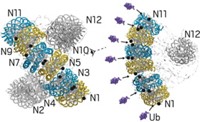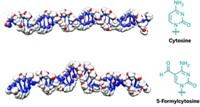Advertisement
Grab your lab coat. Let's get started
Welcome!
Welcome!
Create an account below to get 6 C&EN articles per month, receive newsletters and more - all free.
It seems this is your first time logging in online. Please enter the following information to continue.
As an ACS member you automatically get access to this site. All we need is few more details to create your reading experience.
Not you? Sign in with a different account.
Not you? Sign in with a different account.
ERROR 1
ERROR 1
ERROR 2
ERROR 2
ERROR 2
ERROR 2
ERROR 2
Password and Confirm password must match.
If you have an ACS member number, please enter it here so we can link this account to your membership. (optional)
ERROR 2
ACS values your privacy. By submitting your information, you are gaining access to C&EN and subscribing to our weekly newsletter. We use the information you provide to make your reading experience better, and we will never sell your data to third party members.
Biological Chemistry
DNA Nanostructure Controls Transcription
Opening of tubular nanostructure exposes DNA template, thereby increasing gene transcription
by Celia Henry Arnaud
February 6, 2012
| A version of this story appeared in
Volume 90, Issue 6
Japanese scientists have designed a DNA nanostructure that mechanically controls gene transcription (J. Am. Chem. Soc., DOI: 10.1021/ja2074856). Hiroshi Sugiyama, Masayuki Endo, and coworkers at Kyoto University attached a tubular DNA nanostructure to a double-stranded DNA template containing a promoter region that is enclosed in the tube. The tube also has single-stranded DNA called toehold strands. When complementary DNA binds to these toehold strands, the tube opens, exposing the promoter region and giving RNA polymerase access to the template. With the structure open, the researchers observe a more than fivefold jump in gene transcription, compared with when the structure is closed. Because a low level of transcription occurs even when the tube is closed, the mechanism may not completely block RNA polymerase binding to the template. The system could be used to control the expression of various biological reactions, the researchers note.




Join the conversation
Contact the reporter
Submit a Letter to the Editor for publication
Engage with us on Twitter